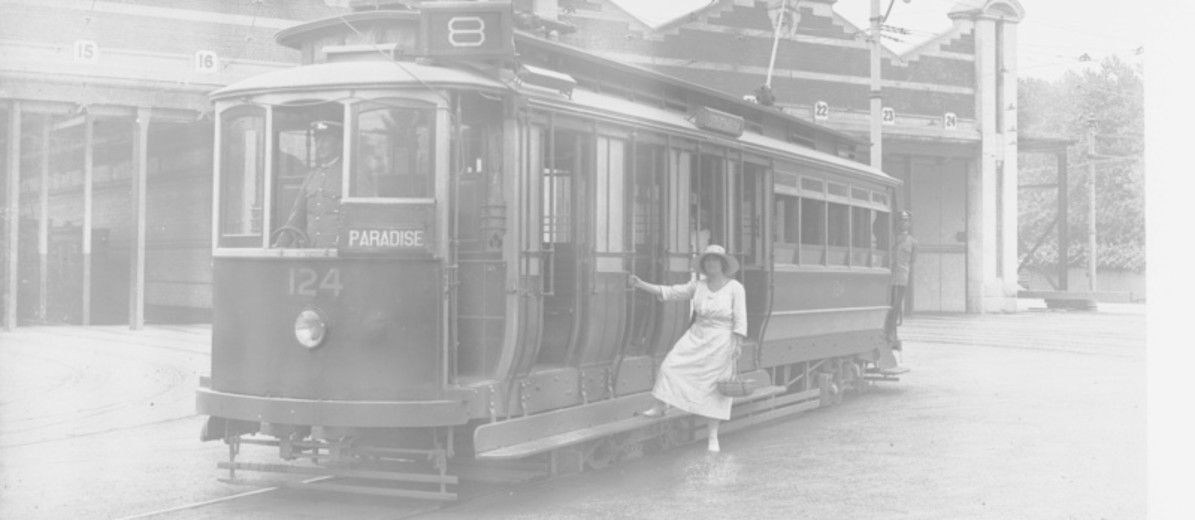Subject
ContributeThe economic and social development of South Australia and Adelaide closely reflect the evolution of public and private transport since European settlement.
Settlement and early development relied on shipping, the main means of travelling to other colonies and fundamental for trade with overseas countries, the rest of Australia and between regions within the colony. Settlement and rural production largely remained on or close to the coast until the late nineteenth century, with roads and land transport leading to coastal ports to serve shipping: copper from Burra in the Mid North was shipped through Port Wakefield in 1849. Ketches with retractable keels drew up on beaches at low tide if no port facilities were available.
Gradually the road network opened up the hinterland and connected communities. However, land transport remained inefficient with freight restricted in size and weight, while transporting goods and people depended on horse or bullock-drawn vehicles over open-surface tracks. Thus, paddle steamers became important in developing the Murray–Darling Basin after William Randell and Francis Cadell pioneered steam navigation on the River Murray in 1853. Riverboats enabled wool to be shipped cheaply from inland stations to ports in South Australia and Victoria. The same boats backloaded supplies to remote parts of Australia and encouraged the growth of communities along the Murray.
Steam power greatly increased the reliability of shipping and had a fundamental impact on land transport with the development of a railway network. Lines were initially built to link the hinterland with Adelaide, and coastal and river ports: South Australia’s first railway opened between Goolwa and Port Elliot on 18 May 1854. However, these lines became unified in a network with a focus on Adelaide and the greater reliability of rail attracted freight and passengers from coastal vessels and riverboats, causing the decline of many regional ports. Rail dominated South Australian land transport until the mid twentieth century, despite the inconvenience of three gauges operating here.
Urban growth about Adelaide also reflected the development of efficient public transport. Horse-drawn transport characterised the foundation years. However, the opening of the Adelaide–Port Adelaide steam railway on 21 April 1856 encouraged more intense industrial development and the growth of a major industrial and residential corridor. The extension of train and tramway networks was an essential feature of urban transport and development until the Second World War: the first electric trams appeared in suburban Adelaide in 1909.
Motor vehicles became increasingly numerous during the early twentieth century, but the lack of formed roads ensured that rail remained the preferred means of transport over long distances. Road networks were extended and improved after the Second World War. Motor vehicles became more powerful, more reliable and less expensive, providing greater flexibility than rail for all but the heaviest freight. Then the deregulation of interstate road transport in 1954, followed soon after by intrastate deregulation, cleared the way for road transport operators to attract ‘less-than-car-load’ freight from rail.
Motor vehicles also dominated public transport in Adelaide. Buses that had originally complemented both train and tram transport ultimately superseded most of these and underpinned expansion in new suburbs. Except for the continuing Glenelg service, the last electric tram ran on Adelaide streets on 22 November 1958.
The continued upgrading of the nation’s highways and the development of heavy vehicles enhanced the comparative advantages of road transport even as rail gauges were gradually standardised and diesel engines replaced steam locomotives during the 1950s. The transfer of the state railways to the Commonwealth government on 1 July 1975, which hastened the rationalisation of the network with the closing of country lines, accelerated the economic decline of many country towns. The attraction of rail waned for all but the long haul of heavy freight. A new passenger terminal opened at Keswick in 1983, but passenger services continued to be uneconomic.
Meanwhile, air became the preferred means of long-distance passenger travel, both interstate and overseas, as planes became larger, more reliable and increasingly cost effective. Many migrants after the Second World War arrived by ship, but the opening of a new passenger shipping terminal at Outer Harbor in 1973 marked the end of an era as aeroplanes became the preferred means of overseas travel. Thereafter passenger vessels using Outer Harbor were mainly cruise ships. However, shipping remained the most efficient means of importing and exporting large cargoes overseas. A new container terminal was built at Outer Harbor in 1977 to take advantage of the efficiencies offered by containerisation.
Air travel also became the most favoured means of long-distance travel within Australia. Advances in aviation and growth in passenger traffic meant that Parafield Airport, established in 1927, became inadequate and the Adelaide Airport at West Beach opened for service on 16 February 1955. Regular jet services commenced nine years later, and an international terminal opened in 1982.
Throughout this time the growing ownership of private motor vehicles undermined the attractions of all forms of public transport because of the greater flexibility they offered. They had a major social impact, spawning regional shopping centres, minimising the significance of local communities and providing people with a freedom of movement unknown in earlier times.




CommentAdd new comment
Quickly, it's still quiet here; be the first to have your say!